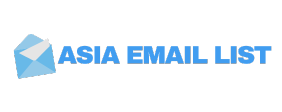B2B Email List Segmentation Demystified How to Divide and Conquer
Segmenting your B2B email list is a powerful strategy to personalize your marketing efforts and increase engagement and conversion rates. By dividing your email list into smaller, targeted segments, you can tailor your messages to resonate better with your audience’s specific needs and interests. Here’s a step-by-step guide to demystify B2B email list segmentation and help you effectively divide and conquer: Collect Relevant Data: Start by gathering as much relevant information about your B2B contacts as possible. This data can include company size, industry, location, job title, past purchase history, engagement level, and any other data points that align with your business goals. You can obtain this data through sign-up forms, CRM systems, website interactions, and other means.
Define Your Segmentation Criteria
Based on the data you’ve collected, identify the criteria you’ll use to segment your email list. For example, you might create India B2B List segments for different industries, company sizes, decision-making roles, or geographic locations. Consider what makes the most sense for your business and marketing objectives. Segmentation based on Company Size: Divide your email list into segments based on the size of the companies your contacts belong to (e.g., small, medium, large enterprises). Companies of different sizes often have distinct needs and pain points, so tailoring your messages accordingly can make a significant difference in engagement. Segmentation based on Industry: Categorize your contacts into segments based on the industries they operate in.
This allows you to create
Industry-specific content and offers that address the unique challenges and interests of each sector. Segmentation based Asia Email List on Job Title/Role. Group your contacts based on their job titles or roles within their organizations. CEOs, managers, and individual contributors all have different priorities and responsibilities, so personalized messaging can enhance your email campaign’s effectiveness. Segmentation based on Engagement Level: Identify and segment contacts based on their past engagement with your emails. This could include active subscribers, occasional readers, or inactive users. Tailor your messages to re-engage inactive subscribers and reward highly engaged ones with exclusive offers. Segmentation based on Geographic Location: If your business operates in multiple regions or countries, segment your email list based on geographical location.
This allows you to send localized content and promotions that resonate with each region’s preferences and cultural nuances. Automation and Personalization: Utilize marketing automation tools to manage your segmented email campaigns efficiently. Personalize your emails with dynamic content that reflects each segment’s interests, pain points, and previous interactions with your brand. A/B Testing: Experiment with different email strategies and content within each segment. A/B test subject lines, content, and calls-to-action to determine what resonates best with each group. Analyze and Iterate: Regularly analyze the performance of your segmented email campaigns. Pay attention to open rates, click-through rates, conversion rates, and other relevant metrics.

